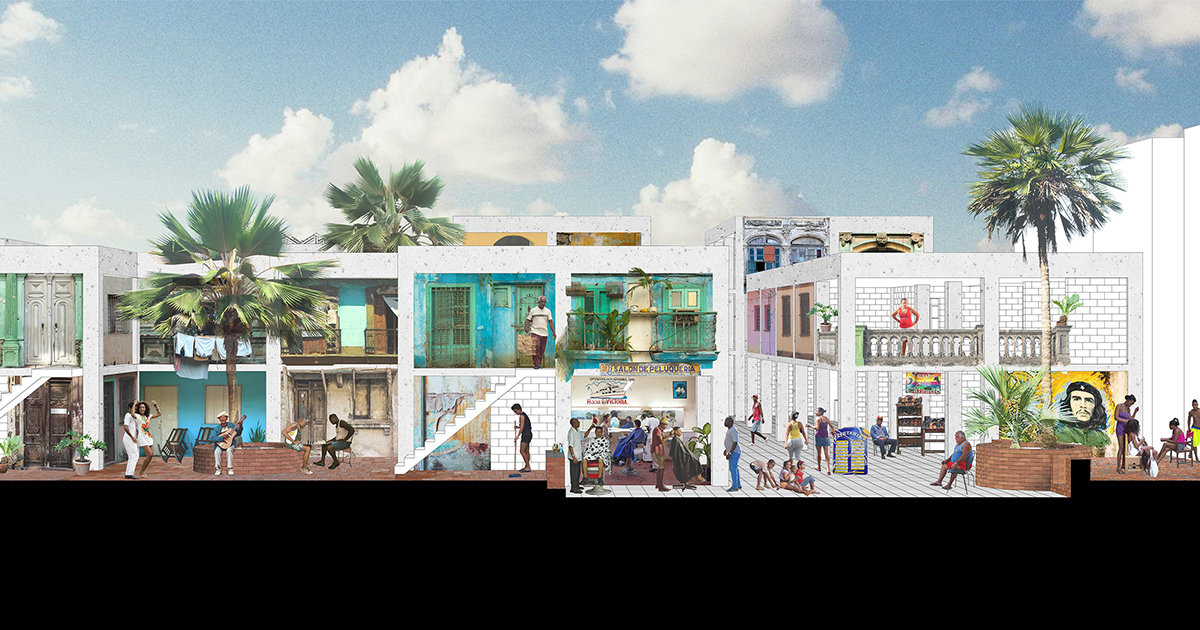
"Collective Patchwork, Patchwork of Collectivity" is an urban architectural strategy for community empowerment and self-managed regeneration of a deteriorating neighborhood in Havana: El Cerro. The project looks for a way in which the local community can benefit from the current dynamic and complex political, cultural and social climate in Cuba and how an architectural intervention can contribute to enhance the energy, resourcefulness and entrepreneurship of the Cubans as a power to spark development and life in their own neighborhood. The design proposes 5 phases in which a material production center, cooperative housing, a commons center, polyvalent workshops, tool rental and start up- and commercial spaces are established, step by step.
Each step of the design should be an investment, not just an expense. Both the process leading up to the construction and the activity of building are an important part of the impact of the eventual built outcome. Producing (eco)materials, establishing cooperatives and local worker groups (microbrigades), participatory planning and designing, education and self-constructing become part of the architecture. Giving people the possibility and responsibility to build, adapt and upgrade their own neighborhood activates the neighborhood and enables the possibility of progress. The design strategy aims to become self-manageable after a while and to contribute to a more sustainable and resilient future.
The Master Dissertation Project by Aaron Swartjes was developed as part of Streetscape Territories, an international collective research practice (KU Leuven, Department of Architecture) that focuses on the transformation of the urban fabric through architectural intervention, considering the making of diverse and tolerant streetscapes the main objective to achieve socially, economically and environmentally sustainable environments for its inhabitants. Here, the research by design deals with the way architectural interventions, open spaces, the property structure and its inherent accessibility and permeability, configure streetscapes as manifestations of social and productive encounter and how their inhabitants can give meaning to them by appropriation.
Aaron’s project addressed the question of how to develop strategies for community empowerment and self-managed regeneration of El Cerro, a deteriorating neighborhood in Havanna, Cuba.
Aaron’s project is of high quality because of the careful insertion in the emergent urban fabric, the subtle configuration of suggested activities, the rethinking-through-design of different levels of collectivity within the project, the high resolution in community construction processes and materiality and the overall poetry in the unfolding of the different constituent collective spaces. The internal and external international jury at our Faculty praised the project and nominated the student for laureate, which Aaron achieved successfully.